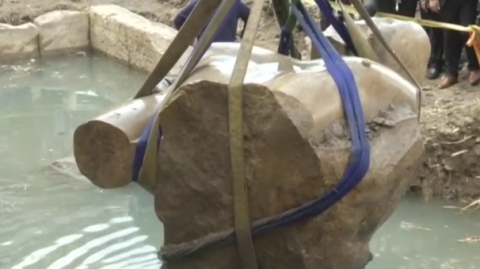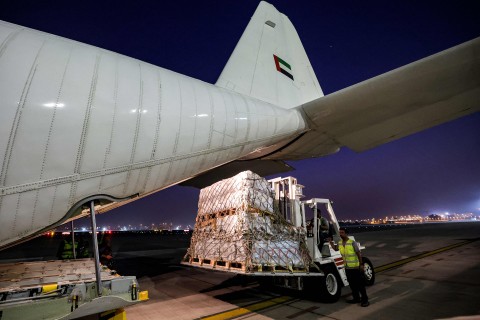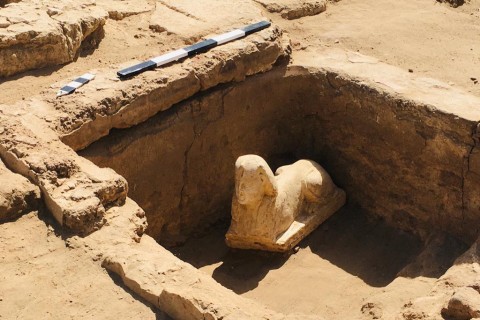

CAIRO, Egypt (Reuters) — Archaeologists from Egypt and Germany on Monday (March 13) started moving an eight-meter statue that was discovered submerged in ground water in a Cairo slum last week.
The massive statue depicts revered Pharaoh Ramses II, who ruled Egypt more than 3,000 years ago, archaeologists have said.
The discovery, hailed by the Antiquities Ministry as one of the most important ever, was made near the ruins of Ramses II’s temple in the ancient city of Heliopolis, located in the eastern part of modern-day Cairo.
“It’s a big discovery, in my opinion, it’s one of the greatest discoveries of the last years,” Antiquities Minister Khaled al-Anani said, adding that it would be placed in the garden of the Cairo museum.
The most powerful and celebrated ruler of ancient Egypt, the pharaoh also known as Ramses the Great was the third of the Nineteenth Dynasty of Egypt and ruled from 1279 to 1213 BCE.
The joint Egyptian-German expedition also found the upper part of a life-sized limestone statue of Pharaoh Seti II, Ramses II’s grandson, that is 80 centimeters long.
The head of the expedition’s German team, Dietrich Raue, dismissed any theories of looting.
Experts will now attempt to extract the remaining pieces of both statues before restoring them. If they are successful and the colossus is proven to depict Ramses II, it will be moved to the entrance of the Grand Egyptian Museum, set to open in 2018.



